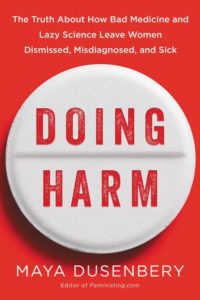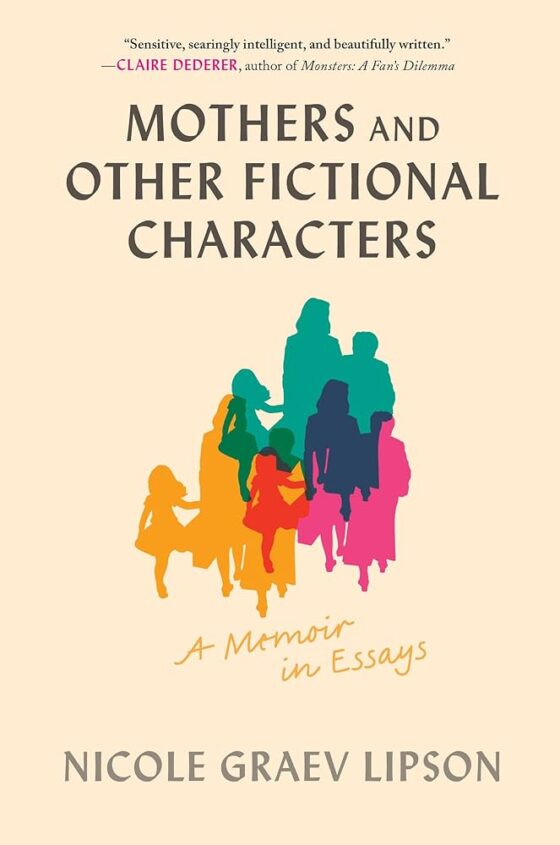
“The womb is the origin of all diseases,” reads a Hippocratic medical text from 5th century BC.
In that time, hysteria, from the Greek word for uterus, was to blame for common inconveniences such a menstrual cramps and dizziness, as well as life-altering misfortunes like the sense of suffocation and paralysis. Even Plato noted the burdensome issues of a wandering womb. He said if a restless uterus roves around the body, “prompt marriage is a recommended cure.” Otherwise, a womb that “remains barren too long after puberty” is sure to cause trouble.
While these early examples of mistrust towards women’s medical concerns may seem archaic, that’s all they are: early examples. Author Maya Dusenbery, executive editor of Feministing, brings forth a slew of modern-day proof that suspicion of women by scientists and medical practitioners is still alive. And though today’s sexist diagnoses may not be as outright as the concept of hysteria, misdiagnoses are prominent as ever, diluting the life-ruining effects of chronic pain and fatigue, autoimmune disorders, fibromyalgia, and endometriosis, just to name a few. Doing Harm: The Truth About How Bad Medicine and Lazy Science Leave Women Dismissed, Misdiagnosed, and Sick is a fearless account of the incompetence of our culture when it comes to treating women properly. Dusenbery writes about the institutional systems that are against women—from philosophy to pharmacy to popular culture—in an accessible, engaging, and organized narrative.
Dusenbery, diagnosed in her twenties with rheumatoid arthritis, is thankful for the relative ease of her diagnosis. Women all around her have struggled with similar symptoms for years, making phone calls and car trips to different doctors who will not take them seriously. In several moments during her book, women give testimonies that begin with severe symptoms of pain and end without an answer. These women are called dramatic, challenging, or panicked, and are written off as having anxiety or menstrual problems. One woman, a Harvard PhD candidate, recounts a ten-day fever, followed by a serious bout of dizziness. Doctors dismiss her as being dehydrated. She begins to bring her fiancé with her to doctor’s appointments, saying, “I felt like if I had a man in the room with me… that somehow I would be treated better. And I was.”
Doing Harm is partly a history book, partly a psychological study, partly a testimonial, and fully a modern day resource for women-centric medical topics. Supported by a lengthy index of terms as well as over fifty pages of notes, Dusenbery’s book is generous with information and context. And while of course the narrative is shaped around an argument, aiming to tell “the truth about how bad medicine and lazy science leave women dismissed, misdiagnosed, and sick,” Doing Harm does the work to show the systematic issues of sexist medicine. (And in doing so, points out the bad and the lazy, too.)
In the 1980s, French historian Etienne Trillat wrote, “Hysteria is dead, that is certain. It has taken its secrets with it to the grave.” The idea that the womb is a beholder of secrets continues to complicate society, both in and out of the medical industry. Dusenbery writes:
Women are still interrupted more in professional settings. They’re still quoted less as experts by the media. And forget the authority to speak about the world; some of the most urgent feminist battles have been over women’s ability to speak the conditions of their own lives.
So if the world cannot trust what women say about their own selves, how can the health industry accommodate what women need? To respond to Trillat, hysteria never “died,” but its alleged symptoms are now diagnosed differently. Where there was once mystery about the wandering womb, now there is the claim that depression and panic attacks are to blame for chronic pain. And in the case of actual depression and panic attacks, menstrual imbalances are to blame.
Dusenbery offers a great example of how the health industry benefits men over women through its treatment of heart disease. She describes an event in 1964, when the American Heart Association held a conference called “Hearts and Husbands: The First Women’s Conference on Coronary Heart Disease.” Ten thousand women gathered and discussed how to prevent their husbands from developing heart disease, and how to care for husbands who had it. Heart disease was known as a “man’s disease” beginning in the 1950s, when cardiovascular death spiked for middle-aged men. Because of this, diagnostic strategies aimed to prevent them from coronary complications.
Women were left out of the equation, and the rate of coronary complications in women continued to rise—especially for women post-menopause. It was almost thirty years after the “Hearts and Husbands” conference that the AHA finally held a conference about heart disease in women. Dusenbery notes that women are at a lower risk for coronary artery disease than men, but “they tend to have worse outcomes when they do get it: twenty-six percent of women versus nineteen percent of men die within the first year after a heart attack.” The systems created for men by men are not sufficient in caring for women. Different bodies and chemical makeups, of course, require different treatments.
The treatment of heart disease is just one of many distressing inadequacies in women’s health issues. Dusenbery notes the impossible: becoming adequate, when the industry continues to be occupied and run by men. Men who do not and cannot fully understand women’s health. For some women, the reality is even bleaker. Dusenbery describes the struggle for women of color to be treated fairly within the context of their symptoms. One particularly perturbing study samples over two hundred medical students, all who were given misinformation about the way a person’s race affects how they feel pain and respond to medicine. The ingrained misunderstanding and mistreatment of women of color, especially of black women, in our health practices happens today—the study is from 2016. Also caught in this malpractice are low-income women, dismissed by many as “chronic complainers,” when some spend years misdiagnosed and incorrectly medicated.
Doing Harm dives into these disturbing truths, from women being sedated as a quick fix to being sent home mid-heart attack. Dusenbery describes the ease of finding a veterinarian versus the difficulty in finding a gynecologist. The difficulty of acquiring codeine versus the ease of obtaining acetaminophen. But among all the scientific evidence in Dusenbery’s incredible first book, the strongest statements come from women. About their lives, their symptoms, and their pain. “Trust us,” is the refrain. “Trust us when we say we’re sick.”




